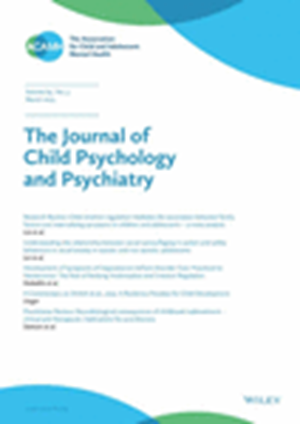炮火下的青少年:受战争影响的青少年心理脆弱性和复原力的多方法研究。
IF 7
1区 医学
Q1 PSYCHIATRY
引用次数: 0
摘要
背景:鉴于接触军事冲突的长期负面影响,确定其直接的心理影响对于制定预防和干预方法至关重要,特别是在青少年中,这一群体特别容易受到心理健康挑战的影响。方法采用心理健康问卷调查、为期一周的全天瞬间抽样和夜间日记测量相结合的多方法方法,对以色列-哈马斯战争(2023年)爆发1-3个月的198名战争暴露的以色列青少年(年龄16.35岁,女性131名,男性65名)进行了调查。我们关注影响心理健康的风险和保护因素。结果大多数青少年报告焦虑(MSCARED-c = 28.54, SD = 15.88)和创伤相关症状(MCPTCI = 46.78, SD = 15.61)的临床水平。女性性别、疲劳感增加和回避型应对策略构成心理幸福感较低的危险因素;面对面的社会互动、情绪应对策略和以问题为中心的应对策略代表了弹性因素。结论:本研究提供了有关风险和保护因素的全面信息,为制定有针对性的预防和干预方法提供了信息,以支持青少年在极端压力时期的健康。本文章由计算机程序翻译,如有差异,请以英文原文为准。
Adolescence under fire: a multi-method study of psychological vulnerability and resilience among adolescents impacted by war.
BACKGROUND
Given the long-term negative impact of exposure to military conflict, identifying its immediate psychological effects is crucial to develop prevention and intervention approaches, especially in adolescents, a group particularly vulnerable to mental health challenges.
METHODS
We examined 198 war-exposed Israeli adolescents (Mage = 16.35 years; 131 females, 65 males), 1-3 months into the Israel-Hamas war (2023), using a multi-method approach combining mental health questionnaires with week-long momentary sampling throughout the day and nightly diary measures. We focused on risk and protective factors affecting mental health.
RESULTS
Most adolescents reported clinical levels of anxiety (MSCARED-c = 28.54, SD = 15.88) and trauma-related symptoms (MCPTCI = 46.78, SD = 15.61). Female gender, increased tiredness, and avoidant coping strategies constituted risk factors for lower psychological well-being; in-person social interaction and emotional and problem-focused coping strategies represented resilience factors.
CONCLUSIONS
By providing comprehensive information on risk and protective factors, this study informs the development of targeted prevention and intervention approaches to support adolescent well-being in times of extreme stress.
求助全文
通过发布文献求助,成功后即可免费获取论文全文。
去求助
来源期刊
CiteScore
13.80
自引率
5.30%
发文量
169
审稿时长
1 months
期刊介绍:
The Journal of Child Psychology and Psychiatry (JCPP) is a highly regarded international publication that focuses on the fields of child and adolescent psychology and psychiatry. It is recognized for publishing top-tier, clinically relevant research across various disciplines related to these areas. JCPP has a broad global readership and covers a diverse range of topics, including:
Epidemiology: Studies on the prevalence and distribution of mental health issues in children and adolescents.
Diagnosis: Research on the identification and classification of childhood disorders.
Treatments: Psychotherapeutic and psychopharmacological interventions for child and adolescent mental health.
Behavior and Cognition: Studies on the behavioral and cognitive aspects of childhood disorders.
Neuroscience and Neurobiology: Research on the neural and biological underpinnings of child mental health.
Genetics: Genetic factors contributing to the development of childhood disorders.
JCPP serves as a platform for integrating empirical research, clinical studies, and high-quality reviews from diverse perspectives, theoretical viewpoints, and disciplines. This interdisciplinary approach is a key feature of the journal, as it fosters a comprehensive understanding of child and adolescent mental health.
The Journal of Child Psychology and Psychiatry is published 12 times a year and is affiliated with the Association for Child and Adolescent Mental Health (ACAMH), which supports the journal's mission to advance knowledge and practice in the field of child and adolescent mental health.

 求助内容:
求助内容: 应助结果提醒方式:
应助结果提醒方式:


